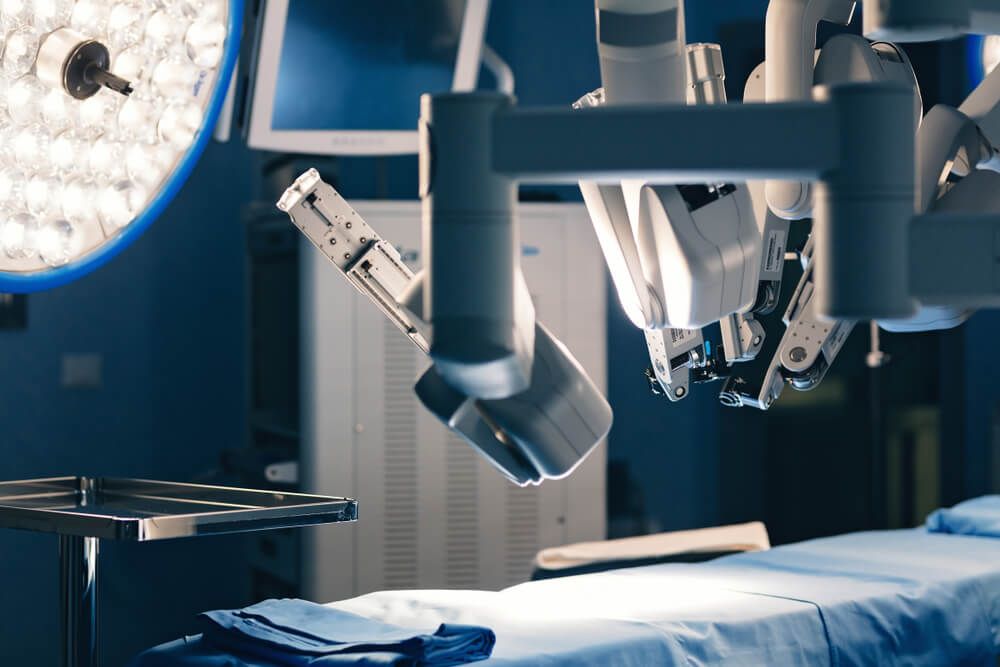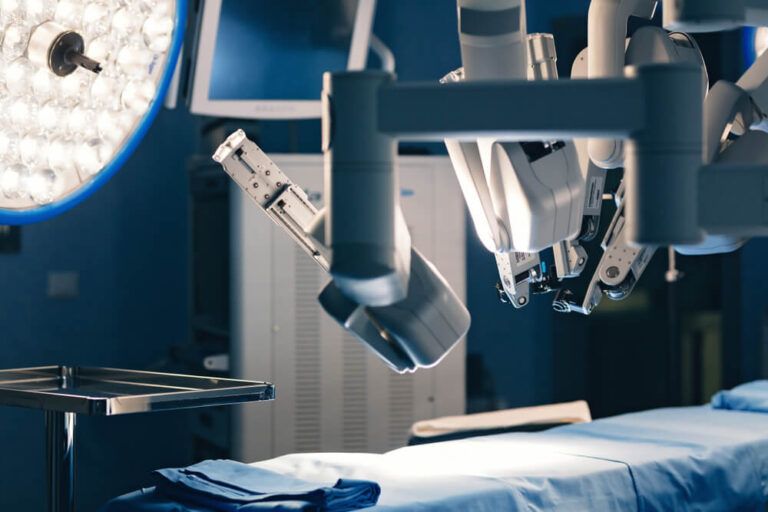Also known as endoscopic surgery, thoracoscopic surgery, arthroscopic surgery, and “keyhole” surgery, laparoscopic surgery involves the use of a thin camera called laparoscope that is used to visualize the inside of the body cavity being operated on. Small incisions of about 5mm are created to allow for insertion of the camera as well as any operating instruments used.
Laparoscopic surgery can help address a variety of problems, including gallbladder issues, hernias, bowel obstructions due to adhesions, and diverticulitis.
Robotic Surgery is an advanced surgical technique that utilizes robotic systems to assist surgeons in performing minimally invasive procedures with enhanced precision, control, and dexterity. These robotic systems consist of a console where the surgeon sits and controls robotic arms equipped with surgical instruments, along with a high-definition camera providing a magnified, 3D view of the surgical site.
During a robotic surgery procedure, the surgeon operates the robotic console, manipulating the surgical instruments with hand and foot controls while observing the surgical field through the camera feed. The robotic system translates the surgeon’s movements into precise actions, allowing for greater accuracy and maneuverability within the patient’s body. Robotic surgery offers several potential benefits compared to traditional open surgery and laparoscopic techniques, including smaller incisions, reduced blood loss, shorter hospital stays, faster recovery times, and less postoperative pain and scarring for patients.
Additionally, the improved visualization and articulation provided by robotic systems enable surgeons to perform complex procedures with greater precision, particularly in confined spaces or areas that are difficult to access with traditional methods. While not suitable for every surgical procedure or patient, robotic surgery continues to advance and evolve, offering new possibilities for less invasive and more effective surgical interventions, ultimately leading to improved patient outcomes and satisfaction.
Robotic-Assisted Laparoscopic Surgery
Similar to conventional laparoscopic procedures, robotic surgery also relies on small incisions and high-tech cameras. However, with robotic-assisted surgery, the surgeon operates in a seperate room where the instruments are controlled through the robot. This allows for greater flexibility and range of movement.
Choosing a traditional laparoscopic surgery versus a robotic-assisted surgery will depend on the individual’s unique situation. We recommend that you discuss with your surgeon to help tailor your treatment plans based on your situation. To learn more about how the Surgical Specialists of Broward & Palm Beach can help, call us at 954-574-0252 to get started.










